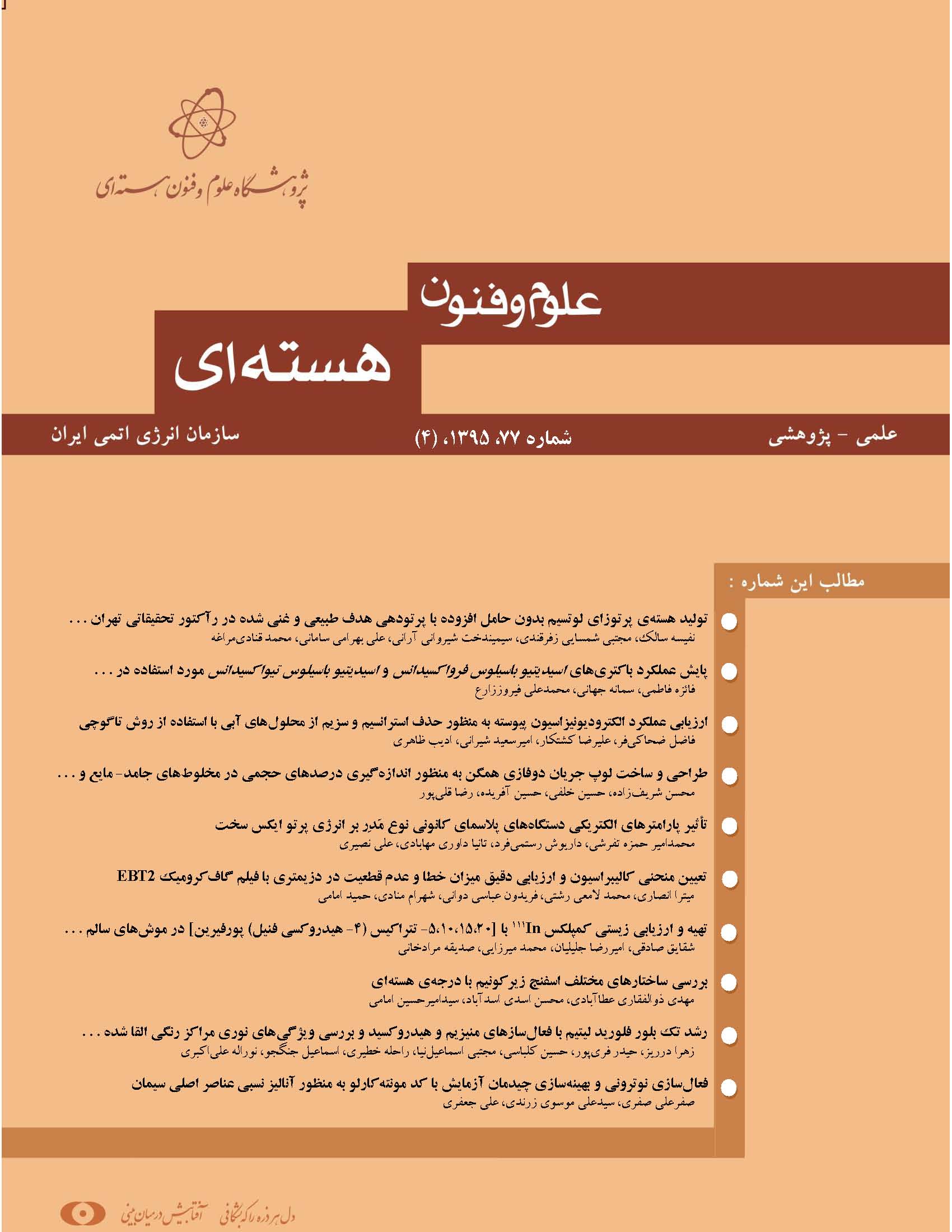نوع مقاله : مقاله پژوهشی
نویسندگان
1 پژوهشکدهی کاربرد پرتوها، پژوهشگاه علوم و فنون هستهای، سازمان انرژی اتمی ایران،
2 پژوهشکدهی کاربرد پرتوها، پژوهشگاه علوم و فنون هستهای، سازمان انرژی اتمی ایران
چکیده
استفاده از لجن فاضلاب در کشاورزی، باعث انتقال آلایندهها به زنجیرهی غذایی و انتشار آنها میشود. در این مقاله، میزان عوامل
بیماریزا و نیز فلزهای سنگین و مغذی در لجن حاصل از فاضلاب تصفیهخانههای شهری اکباتان و شهید محلاتی (تهران) در سه نوبت نمونهبرداری مستقل بررسی شد. همچنین کاهش عوامل بیماریزا در لجن به دست آمده با دز kGy10پرتو گاما حاصل از Co60 مطالعه شد. نتایج نشان داد که لجن تصفیهخانهها از نظر مقدار فلزهای سنگین و مغذی در محدودهی مجاز استاندارد است. بوی نمونههای پرتودیده کمتر از نمونههای شاهد بود. میزان عوامل بیماریزا پس از تابشدهی به زیر حد مجاز رسید، در حالیکه تعداد تخمهای زندهی آسکاریس در لجن تصفیهخانه اکباتان حتی پس از تابشدهی، بالاتر از حد مجاز بود. با توجه به این نتایج، فقط لجن تصفیهخانهی شهید محلاتی به لجن کلاس A تبدیل شد، به این معنی که بتواند در
باغها و حتی منازل قابل استفاده باشد. ضروری است قبل از استفاده از این لجن، الزامات کاهش تجمع حشرات به کار گرفته شود. قابلیت به کارگیری دز مزبور به منظور تبدیل لجن به کود بهداشتی، به دلیل ثابت نبودن آلودگی میکروبی، منوط به تعیین آلودگی اولیه است.
کلیدواژهها
عنوان مقاله [English]
A Study on the Effect of Gamma Rays on Reducing the Burden of Some Pathogens in Sewage Sludge
نویسندگان [English]
- R Betesho 1
- Kh Ghotbikohan 2
- F Nabardi 2
- R Rafiee 2
چکیده [English]
: The reuse of sludge in agriculture leads to the transfer of some pollutants into food chain, thus hazarding the public health. The pathogens, heavy metals and nutrients in the sewage sludge from two wastewater treatment plants in Tehran-Iran, Shahid Mahallati and Ekbatan, were investigated in three independent samplings. Moreover, the reduction of pathogens after irradiation by 10kGy gamma ray from 60Co was studied. The obtained results indicated that the heavy metals and nutrients in both of the wastewater treatment plants comply with Environmental Pollution Agency Standards and the pathogens counts reduced to the extent of the permitted level after irradiation. Viable Ascaris eggs in Ekbatan sludge was more than permitted level even after irradiation. According to the obtained data, just the sewage sludge of Shahid Mahallati treatment plant produced class A biosolids by irradiation which means that it can be applied to the agricultural lands, public contact sites and even home gardens. The odor of irradiated samples reduced as compared with the control ones. Vector attraction reduction processes must be conducted before use. The capability of the mentioned dose of gamma ray in converting the municipal sewage sludge into a sanitary fertilizer, depends on the microbial contamination level, specially the numbers of viable Ascaris eggs.
کلیدواژهها [English]
- Wastewater
- Sanitary Fertilizer
- Irradiation
- Ascaris
- Pollutants

